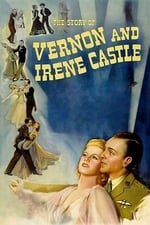Henkilön tiedot
Tunnetaan näistä töistä Näyttelijä
Tiedettyjä töitä 15
Sukupuoli Mies
Syntymäpäivä 25 maaliskuu 1906
Kuolinpäivä 24 helmikuu 1994 (87 vuotta vanha)
Syntymäpaikka Nogent-sur-Marne, Val-de-Marne, France
Tunnetaan myös nimillä
- -
Sisällön pisteytys
100
Kyllä! Hyvältä näyttää!
Kirjaudu ilmoittaaksesi ongelmasta
Elämäkerta
Jean Sablon (Nogent-sur-Marne 25 March 1906 – Cannes 24 February 1994) was a French singer, songwriter, composer and actor. He was one of the first French singers to immerse himself in jazz. The man behind several songs by big French and American names, he was the first to use a microphone on a French stage in 1936. Star of vinyl and the radio, he left France in 1937 to take up a contract with NBC in the United States. His radio and later televised shows made him a huge star in America. Henceforth the most international of French singers among his contemporaries, he became an ambassador of French songwriting and dedicated his career to touring internationally, occasionally returning to France to appear on stage. His sixty-one year career came to an end in 1984.
Sablon was born in Nogent-sur-Marne, the son of a composer, with brothers and sisters who had successful careers of their own in musical entertainment.
A pupil at the Lycée Charlemagne in Paris, Jean Sablon dropped out, intending to study at the Conservatory of Paris. Too late, however, to apply for his year, he concentrated immediately on a professional singing career. He made his debut at the age of seventeen in an operetta in Paris. It was in operettas that he came to share the stage in 1923 first with Jean Gabin in La Dame en Décolleté and then with Charles Boyer and Falconetti in Simili in 1925.
1927 found him appearing in the review of Au Temps de Gastounet (written by Rip) with Jacqueline Delubac. It was Paul Colin who created the first billboard for the young singer. After appearing in the operetta "Lulu" with Fernand Gravey, he embarked on a transatlantic journey to Rio de Janeiro in the company of Georges Milton and Alice Cocéa for the inauguration of the Copacabana Palace (1928). In 1929, Jean Sablon recorded his first demo record for Columbia with Georges Van Parys, as well as sharing the stage in the operetta Vive Leroy with Arletty, Dranem and Jacqueline Delubac and then Music Hall with Damia and Germaine Rouer. The following year, he appeared in Cocktail 328 with Damia again, as well as making his first film, Chacun sa Chance, the same year, with Jean Gabin who also made his film debut with him.
Henri Diamant-Berger approached Sablon in 1931 for the making of Tante Aurélie alongside his sister Germaine Sablon. That year, he was back on stage in La Revue Argentine, then Parade de Femmes with Carlos Gardel. It was in 1931 that he met Mireille, whose song "Couchés dans le foin" became a great success, the introduction being made by the editor Raoul Breton.
Other important encounter in 1931, Jean discovered the guitarist Django Reinhardt in La Boîte à Matelots.
On stage, Jean appeared with Mistinguett at the Casino de Paris in Paris qui brille. ...
Source: Article "Jean Sablon" from Wikipedia in English, licensed under CC-BY-SA 3.0.
Jean Sablon (Nogent-sur-Marne 25 March 1906 – Cannes 24 February 1994) was a French singer, songwriter, composer and actor. He was one of the first French singers to immerse himself in jazz. The man behind several songs by big French and American names, he was the first to use a microphone on a French stage in 1936. Star of vinyl and the radio, he left France in 1937 to take up a contract with NBC in the United States. His radio and later televised shows made him a huge star in America. Henceforth the most international of French singers among his contemporaries, he became an ambassador of French songwriting and dedicated his career to touring internationally, occasionally returning to France to appear on stage. His sixty-one year career came to an end in 1984.
Sablon was born in Nogent-sur-Marne, the son of a composer, with brothers and sisters who had successful careers of their own in musical entertainment.
A pupil at the Lycée Charlemagne in Paris, Jean Sablon dropped out, intending to study at the Conservatory of Paris. Too late, however, to apply for his year, he concentrated immediately on a professional singing career. He made his debut at the age of seventeen in an operetta in Paris. It was in operettas that he came to share the stage in 1923 first with Jean Gabin in La Dame en Décolleté and then with Charles Boyer and Falconetti in Simili in 1925.
1927 found him appearing in the review of Au Temps de Gastounet (written by Rip) with Jacqueline Delubac. It was Paul Colin who created the first billboard for the young singer. After appearing in the operetta "Lulu" with Fernand Gravey, he embarked on a transatlantic journey to Rio de Janeiro in the company of Georges Milton and Alice Cocéa for the inauguration of the Copacabana Palace (1928). In 1929, Jean Sablon recorded his first demo record for Columbia with Georges Van Parys, as well as sharing the stage in the operetta Vive Leroy with Arletty, Dranem and Jacqueline Delubac and then Music Hall with Damia and Germaine Rouer. The following year, he appeared in Cocktail 328 with Damia again, as well as making his first film, Chacun sa Chance, the same year, with Jean Gabin who also made his film debut with him.
Henri Diamant-Berger approached Sablon in 1931 for the making of Tante Aurélie alongside his sister Germaine Sablon. That year, he was back on stage in La Revue Argentine, then Parade de Femmes with Carlos Gardel. It was in 1931 that he met Mireille, whose song "Couchés dans le foin" became a great success, the introduction being made by the editor Raoul Breton.
Other important encounter in 1931, Jean discovered the guitarist Django Reinhardt in La Boîte à Matelots.
On stage, Jean appeared with Mistinguett at the Casino de Paris in Paris qui brille. ...
Source: Article "Jean Sablon" from Wikipedia in English, licensed under CC-BY-SA 3.0.
Näyttelijä
|
|||||||||
|
|||||||||
|
|||||||||
|
|||||||||
|
|||||||||
|
|||||||||
|
|||||||||
|
|||||||||
|
|||||||||
|
Käsikirjoitus
|






